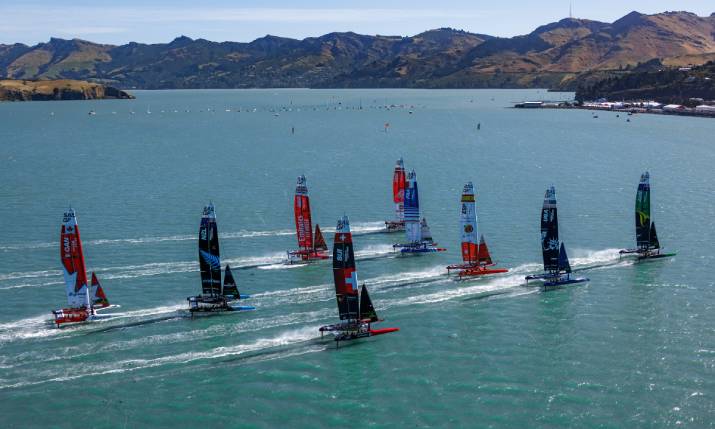Dynamic changes: Riedel on how sustainable remote productions can become the norm

By Lutz Rathmann, Riedel Communications CEO managed technology.
As we reflect on the dynamic changes in the sports broadcasting industry throughout 2023, it is apparent that remote production is well on its way to establishing itself as the new norm. Originating as a response to the challenges posed by the pandemic, remote production has evolved into a thriving practice seamlessly integrated into the fabric of sports broadcasting, as people have discovered that not only does it work, but it has many benefits. I am proud to reflect on the role Riedel has played in steering the course of these developments as an early adopter and technological innovator. As a fitting example to these trends, I will consider our collaboration with SailGP, an international yacht racing league that is just as passionate about innovation and sustainability as we are.
Energy efficiency
The global focus on energy efficiency and carbon footprints will be front and centre in productions as companies try to save energy and save money. At the same time, they are looking for ways to be more sustainable and reduce their footprint, so solutions that reduce travel and shipping, as well as compact, multifunctional equipment that requires less space, less power, provides less weight, will be important.
For SailGP, sustainability isn’t just about efficiency; sustainability is a purpose in and of itself. SailGP’s goal is to become the world’s most sustainable and purpose-driven global sport. That’s why we’re proud to help them implement forward-thinking sustainability initiatives, and ourselves work hard to improve climate and environmental protection in our processes. For one, by trying to reduce our footprint by reducing travel; for SailGP races, Riedel has only the most essential members on-site, with additional remote support from the remote operations centre (ROC) in Wuppertal, Germany.
Where we once required a significant amount of on-site equipment and workplaces in mobile containers for a similar production, with SailGP we could reduce our shipment to a single container, thanks to a higher focus on remote work and remote production. With all 25 wireless cameras for each SailGP event being handled remotely by operators in London, most of the equipment and the workers no longer need to travel the world.
Innovation will continue
As the world is trying to reduce travel to cut down on emissions, more and more people will want to participate in sporting events remotely. Those technologies that bring the sport closer to the people by making it more engaging and easier to understand and connect with remotely, and that will make the difference between a good event and a great one.
We’ve already made great strides with our SailGP solution, which sets new standards and a benchmark for TV audiences with close insights of videos and audios from each yacht, wireless solutions, modifications to cameras and several alterations to make them work efficiently in water. Teams on the catamarans can seamlessly talk to umpires or their team members at the coast, and umpires can monitor the race closely as each boat has a camera installed in the front and the back, issuing penalties with the push of a button.
Content is king, and we need more and more of it. From niche sports over women’s sports to college sports being broadcast to large audiences, we’ve seen a spectacular rise in lower-tier sports productions. While all these productions strive to create high end content, their budgets often are rather limited. We’re seeing a continued rise in innovative, software-based solutions, which require less equipment and fewer people to operate, thereby reducing their costs. For these lower tier productions, intuitive, easy to use solutions are absolutely essential, as many of their operators and engineers may not have the experience of their fully-fledged broadcast counterparts.
What’s on the horizon?
As we gaze into the future of sports broadcasting, we see cloud technology and software-based solutions emerge as key protagonists. The integration of cloud-based platforms will revolutionise the industry, offering unparalleled flexibility and scalability, and we anticipate an increased reliance on cloud infrastructure for remote production, storage, and collaborative workflows, further enhancing efficiency and reducing costs.
Software-based broadcast solutions are poised to take centre stage, responding to the growing demand for diverse content across various sports. Riedel envisions a landscape where innovative, technology-driven approaches will enable cost effective productions without compromising on quality. This shift towards software-centric solutions aligns with our commitment to adaptability and underscores our dedication to meeting the evolving needs of the sports broadcasting industry.
Our journey with SailGP exemplifies our commitment to innovation, sustainability, and delivering unparalleled viewer experiences. Looking ahead to 2024, we embrace the challenges and opportunities that cloud technology and software-based solutions bring.

